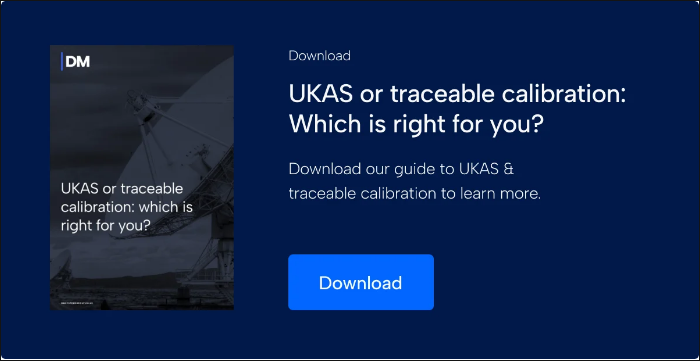Evaluation methods for accurate temperature calibration
Temperature calibration is essential in industries that rely on thermal accuracy to ensure process integrity, safety and regulatory compliance. From pharmaceuticals to food processing, precise temperature measurement acts as the foundation to product quality and operational efficiency.
Two core approaches stand out for the calibration of temperature-measuring instruments: dry block calibration and ice-point calibration. Each method offers distinct operational strengths, and understanding their applications helps engineers make the right choice for their testing environments.
What is dry block calibration?
Dry block calibrators are portable instruments designed to heat or cool a metal block to a precise temperature. Sensors are inserted into the block and compared against a reference thermometer. The appeal of this method lies in its efficiency and broad temperature range (often from -35°C to +650°C) making it well-suited for industrial environments that demand versatility.
Dry blocks are ideal when fast turnaround is needed. With stable and repeatable heat zones, this method supports multi-sensor calibration and minimises human error through automated controls. It is particularly useful for process industries requiring regular recalibration of multiple probes and temperature measurement systems.
What is ice point calibration?
Ice-point calibration (also known as the 0°C reference method) relies on the physical property of melting ice to provide a stable calibration point. A measuring device is submerged in a mixture of purified water and ice that is 0°C, providing a reliable reference point. It is typically used for high-accuracy requirements or in laboratory settings where environmental control is critical. This method offers a naturally stable and repeatable fixed point but is limited to a single calibration temperature.
Whilst more time-consuming and constrained in application, ice-point calibration offers high confidence in accuracy for sensors operating near freezing temperatures. It’s a reliable standard against which other methods are judged, often used as a reference in validating electronic calibration devices.
Are either of these right for your application?
When deciding between dry block and ice-point calibration, the choice depends on the conditions in which your equipment operates and the level of precision required.
- Dry block calibration is ideal for operations needing flexible, repeatable calibration across a broad temperature range. It fits seamlessly into production schedules and supports high-throughput environments where efficiency and minimal downtime are priorities.
- Ice-point calibration is essential when sensors operate in temperature-critical zones near 0 °C or when confirming the accuracy of reference standards.
Why professional calibration is unmatched
While in-house or informal testing may identify basic performance issues, only accredited calibration guarantees full traceability, verified accuracy and regulatory compliance. UKAS-accredited calibration follows ISO 17025 standards, ensuring every measurement is linked to national or international references with documented uncertainty and environmental control.
Unlike NIST-based or manufacturer-calibrated setups, which may permit self-declaration or vary by region, UKAS calibration can only be conducted by approved laboratories or field technicians working under accredited procedures. This ensures your equipment meets internal quality standards and is also fully defensible in audits, inspections, or regulatory assessments.
Professional calibration also:
- Removes ambiguity by applying controlled, standardised processes to each instrument.
- Identifies subtle measurement drift before it impacts safety or product quality.
- Provides calibration certificates that satisfy ISO, MHRA, and industry-specific requirements.
Get the gold standard of temperature calibration
Temperature calibration is an important safeguard for operational integrity, product quality and regulatory compliance. Whether your business operates in harsh industrial environments or precision-controlled labs, the calibration method needs to reflect the demands of your equipment and the consequences of inaccuracy.
Dry block and ice-point methods both have distinct roles to play, but only a professional, UKAS-accredited service ensures that whichever method is applied, it is done with precision, traceability and accountability.
At DM, we deliver expert temperature calibration wherever you are, combining field flexibility with laboratory-grade confidence. Our mobile service enables you to maintain high standards without delay, disruption or compromise. To find out more about UKAS accredited services and if they are right for your business, download our guide below.
Book your calibration now
Our experts are on-hand to handle all of your calibration needs.
